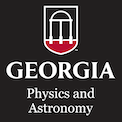Events Calendar View
-
Departmental Colloquium
Aug 31, 2017
Stochasticity and Synchronization of Single-Cell Biological Clocks
Oscillators, by virtue of their periodic dynamics, provide a way to tell time, as illustrated by the periodic movement of a clock’s pendulum. The study of coupled oscillators and their mutual synchronization has remained a problem central to physics for centuries, but has also captured the imagination of biologists in recent times. One example of synchronized oscillators are the circadian biological clocks found in the living cells of many organisms. Biological clocks are pervasive in their effects from genes to ecosystems. Biological clocks affect the health of animals and plants and they are being engineered for timed delivery of therapeutics, algal bioreactors for biofuel production, and crop improvement. The clock, through its light entrainment feature, impacts the genetic dynamics of bacterial assemblages in the world’s oceans and hence may affect carbon cycling in marine ecosystems. Understanding how cell populations synchronize their clock oscillations, to give rise to a fully functional “biological clock”, is therefore of substantial interest in current systems biology research. In this lecture, I will review our past experimental and modeling studies of the gene regulatory system dynamics of the biological clock in the filamentous fungus Neurospora crassa at the level of macroscopic cell populations. I will then discuss recent micro-fluidics-based experiments on the N. crassa biological clock, and its stochastic modeling, at the single-cell and few-cell level. In these experiments, one or a few cells are isolated inside small water droplets immersed in oil. Time series of fluorescent signals from clock-controlled (CCG) gene products are recorded for each individual cell. Detailed noise propagation analyses of these time series reveal that the biological clock module of single, isolated cells is strongly stochastic, with a broad power spectrum (periodogram) peaked at near-circadian (~22h) oscillation periods. At the few-cell level, statistical analysis of observations from 2-cell to 15-cell droplets demonstrate that the clocks become highly correlated when confined in close spatial proximity within the same aqueous droplet, suggesting that these correlations may be the precursor to the fully developed coherent clock oscillations observed in large cell populations. Ensemble network simulations (ENS) are performed on stochastic chemical reaction network models of single- and multiple-cell systems. The ENS results show that clock models with Gillespie-type stochastic reaction kinetics and a quorum sensing inter-cell communications are generally consistent with the experimental single- and few-cell data. Experimental searches are currently under way to identify possible diffusible exo-metabolites which could mediate such quorum-sensing inter-cell communications. Lastly, I will also discuss the light entrainment effects observed in single cells subjected to periodic on-off-illumination and their relation to the light entrainment seen in macroscopic cell populations. -
CSP Lunch Seminar
Sep 5, 2017
Efficient scrambling of quantum information on a chain of qubits.
-
Departmental Colloquium
Sep 11, 2017
ITER: The Next Step Towards Realizing Fusion
The International Thermonuclear Experimental Reactor, or ITER, is being built in the south of France by an international collaboration of seven countries (US, EU, Japan, South Korea, India, China and Russia). ITER is a culmination of over 50 years of research in fusion and aims at producing a 10 fold gain in energy output, which will provide the necessary physics basis to then design and build demonstration reactors targeting a >40 fold gain. This talk will cover the basics of fusion energy and an overview of the ITER project. In addition, a brief description will be provided of the heating and current drive systems used to generate the 150 million degree temperatures required for sustaining the fusion reaction. -
CSP Lunch Seminar
Sep 12, 2017
Introduction to xmgrace: a plotting tool for two-dimensional graphs.
-
CSP Lunch Seminar
Sep 26, 2017
Using data-driven models to uncover cell behaviors controlling self-organization during Myxoccocus xanthous development.
-
CSP Lunch Seminar
Oct 3, 2017
Exploring Supernova Nucleosynthesis with Supercomputers.
Page 74 of 121, showing 6 records out of 723 total, starting on record 439, ending on 444


